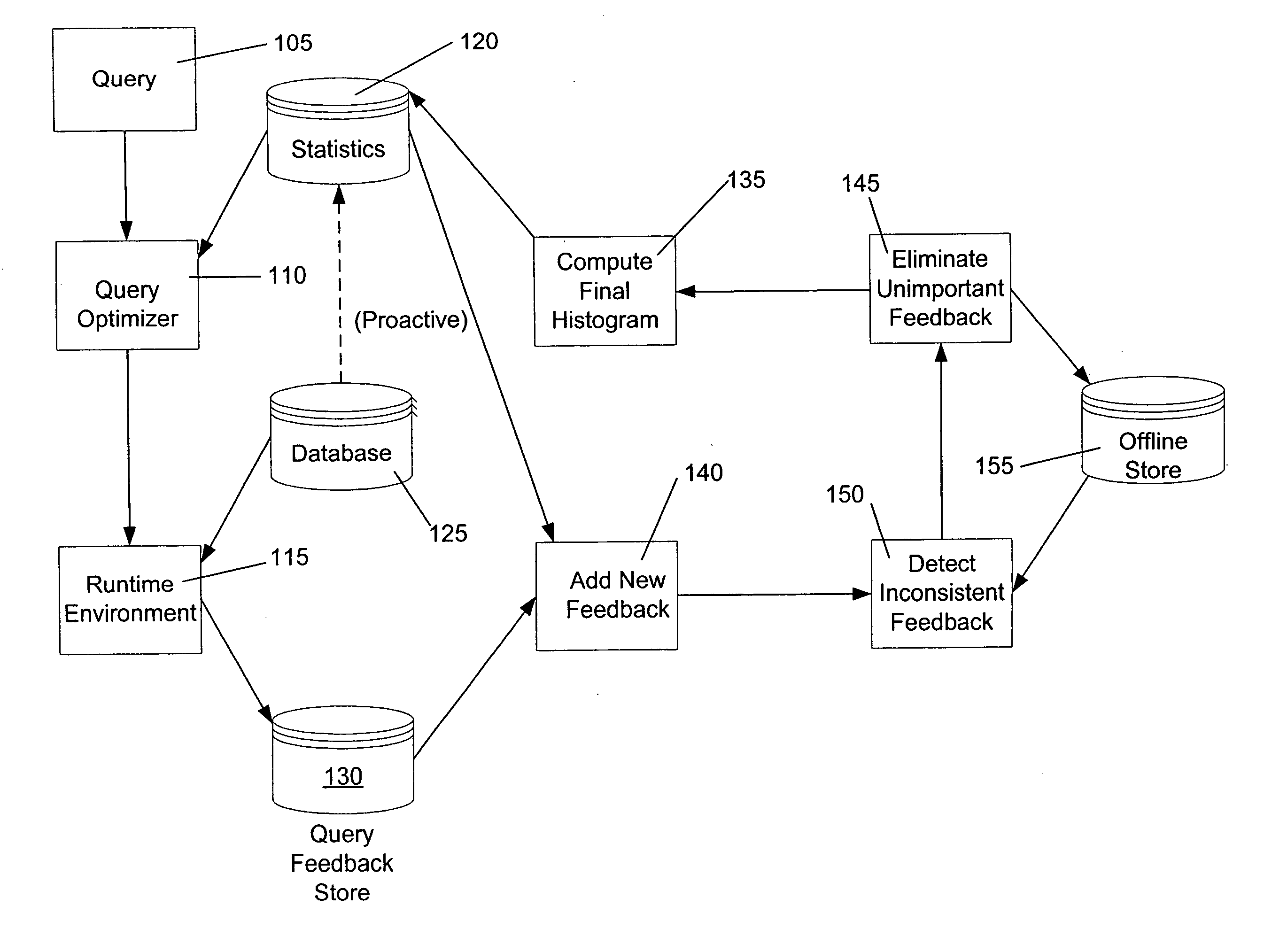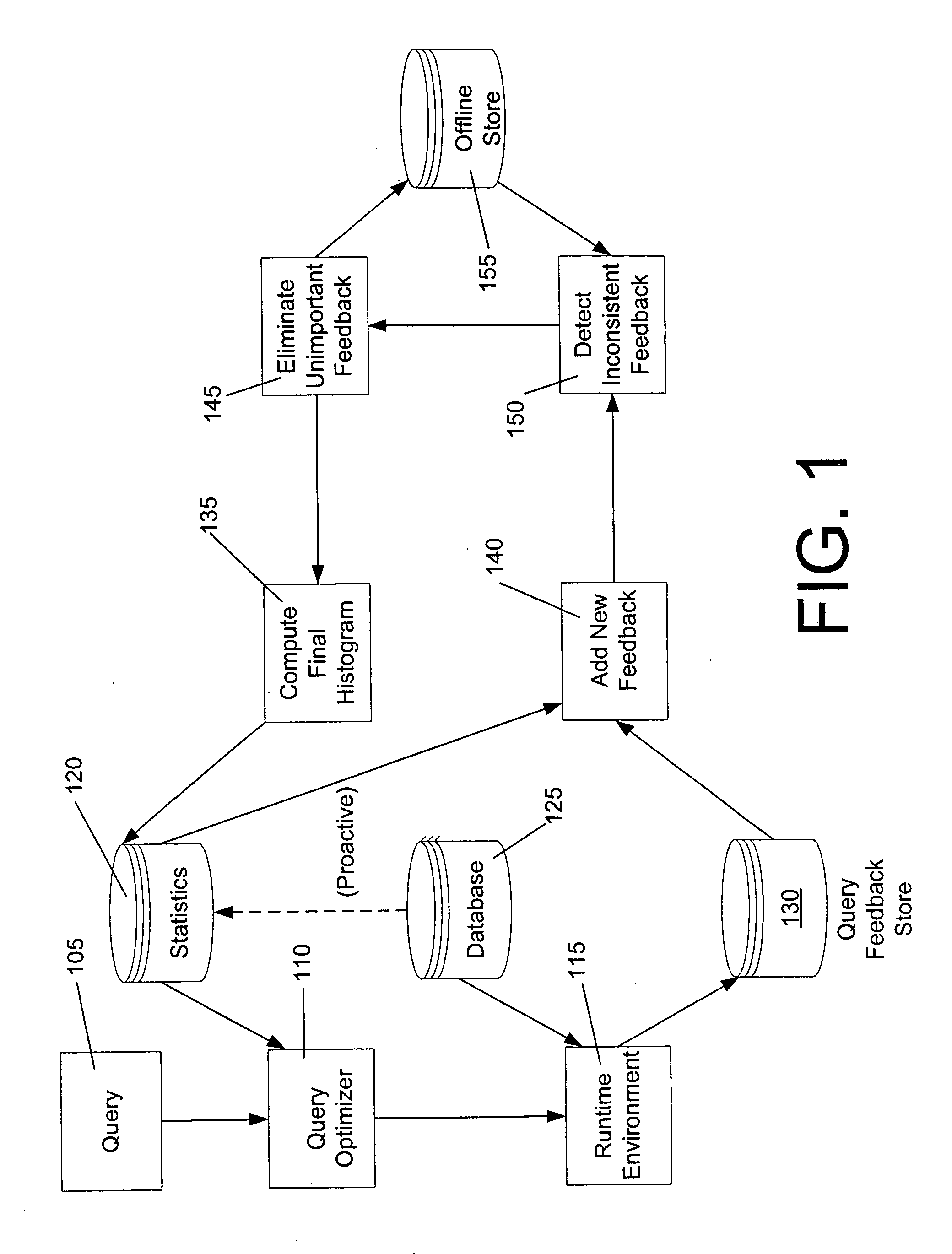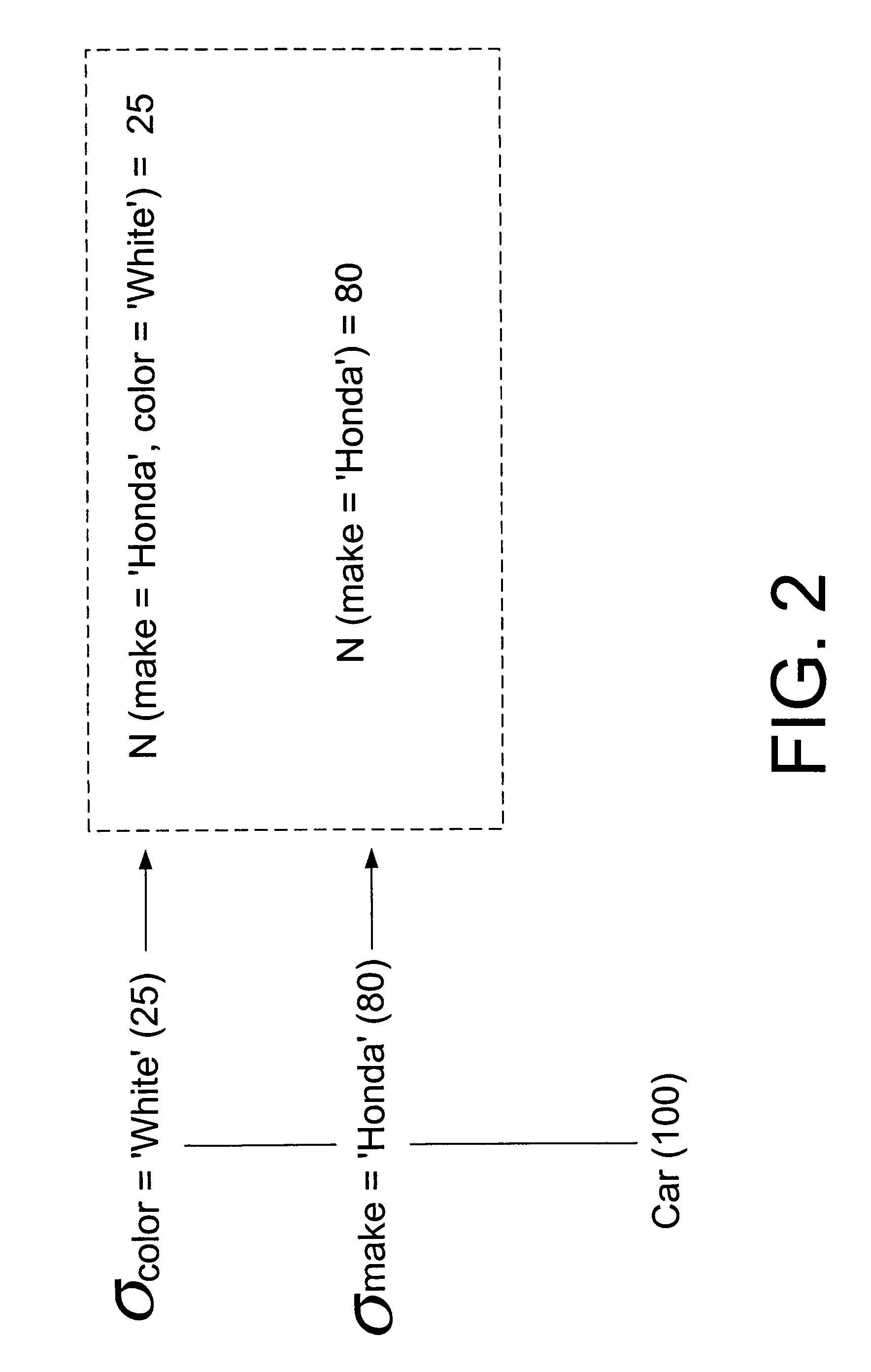Consistent histogram maintenance using query feedback
a query feedback and histogram technology, applied in the field of query optimization using query feedback, can solve the problems of increasing the contention for the database, exacerbating the overhead of this method, and significant estimation errors, and achieve the effect of improving statistics and optimization and improving accuracy of isomers
- Summary
- Abstract
- Description
- Claims
- Application Information
AI Technical Summary
Benefits of technology
Problems solved by technology
Method used
Image
Examples
example 1
[0091] For the running example, V(bi)=1 for each i. As before, three QFs are added, given by equations (1), (2), and (3). Denote these QFs as q1, q2, and q3, respectively; see FIG. 5. Since bucket b1 is referred to only by q1, it follows from equation (7) that n(b1)=λ1 / e. Similarly, n(b2)=λ1λ2 / e, n(b3)=λ1λ3 / e, and n(b4)=λ1λ2λ3 / e. Equations (1), (2), and (3) can therefore be rewritten as
λ1+λ1λ2+λ1λ3+λ1λ2λ3=100e
λ1λ2+λ1λ2λ3=80e
λ1λ3+λ1λ2λ3=30e
Solving the above equations, λ1=14e, λ2=4, and λ3=3 / 7 are obtained, yielding the final histogram (FIG. 6).
[0092] This histogram is consistent with all of the added QFs. It is also the most uniform in the following sense. It maintains the 80-20 ratio between Hondas and BMWs for both the colors. Similarly, it maintains the 30-70 ratio between white and black cars for both the makes. Such uniformity is not obtained by adding QFs in an ad-hoc manner, e.g., as in the histogram of FIG. 3(e).
[0093] Two techniques have been used here to speed up the im...
example 2
[0097] Suppose that ISOMER obtains the two QFs N(make=‘Honda’)=80 and N(make=‘Honda’, color=‘White’)=30, and then some updates to the data occur. After these updates, ISOMER might obtain the QFN(make=‘Honda’, color=‘Black’)=60. Clearly, there exists no histogram solution consistent with all three QFs.
example 3
[0098] Suppose that ISOMER obtains the QF N(make=‘Honda’)=80. Then some new car tuples are inserted. After these updates, the QFN(make=‘Honda’, color=‘Black’)=90 might be obtained. Any solution that is consistent with both the above QFs shall have n(b)<0 for at least one bucket b. Hence these solutions shall not be valid as histograms.
[0099] In the presence of such inconsistent QFs, if we invoke the maximum entropy solution, the variable values will never converge, since there exists no consistent solution to the optimization problem. Thus, ISOMER must first eliminate the QFs that are no longer valid due to updates, leaving a set of consistent QFs having a valid histogram solution. Thus, in Example 3, the first QF about the total number of Honda cars being 80 must be eliminated because it cannot be true given the newer information of there being 90 black Honda cars.
[0100] However, deciding which QF is invalid is not always straightforward and depends on the type of data change. In...
PUM
 Login to View More
Login to View More Abstract
Description
Claims
Application Information
 Login to View More
Login to View More - R&D
- Intellectual Property
- Life Sciences
- Materials
- Tech Scout
- Unparalleled Data Quality
- Higher Quality Content
- 60% Fewer Hallucinations
Browse by: Latest US Patents, China's latest patents, Technical Efficacy Thesaurus, Application Domain, Technology Topic, Popular Technical Reports.
© 2025 PatSnap. All rights reserved.Legal|Privacy policy|Modern Slavery Act Transparency Statement|Sitemap|About US| Contact US: help@patsnap.com



